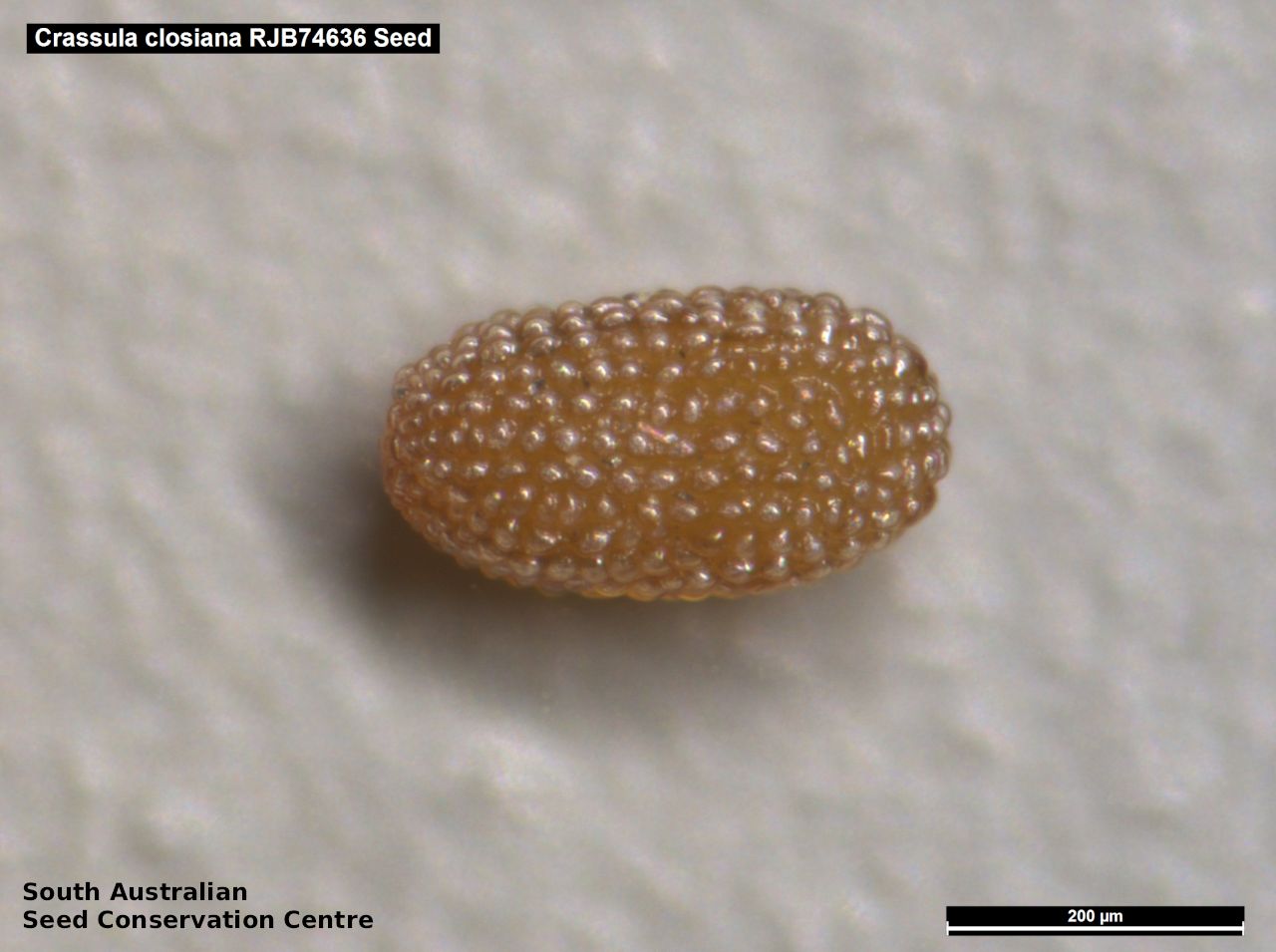







Botanical art
Prior names
Tillaea macrantha
Crassula macrantha
Common names
Spreading Stonecrop
Spreading Crassula
Etymology
Crassula the diminutive of the Latin 'crassus' meaning thick, alluding to the fleshy leaves and branches. Decumbens from the Latin 'decumbere' meaning to lie down, referring to the habit of the species.
Distribution and status
Found in the southern part of South Australia, growing in a wide range of habitats, but usually on seasonally moist soil. Also found in Western Australia, New South Wales, Victoria, Tasmania and other parts of the world. Native. Common in South Australia. Common in the other States.
Herbarium regions: Flinders Ranges, Eyre Peninsula, Northern Lofty, Murray, Yorke Peninsula, Southern Lofty, Kangaroo Island, South Eastern, Green Adelaide
NRM regions: Adelaide and Mount Lofty Ranges, Eyre Peninsula, Kangaroo Island, Northern and Yorke, South Australian Arid Lands, South Australian Murray-Darling Basin, South East
AVH map: SA distribution map (external link)
Plant description
Annuals herb with decumbent or erect branches to 15 cm long, little- to much-branched; sometimes rooting at nodes. Leaves linear-lanceolate, to -oblanceolate, to 9 mm long and 1.5 mm wide; acute, rarely obtuse or rounded; dorsiventrally compressed, more or less convex above and usually strongly convex below. Inflorescence terminal with white to cream flowers. Flowering between August and November. Fruits are small red-brown capsules at terminal of stems. Seeds are orange-brown short oblong to 0.4 mm long and 0.2 mm wide, with a tuberculate surface.
Seed collection and propagation
Collect seeds between October and December. Collect whole plants that are drying off, turning red-brown with mature capsules. These will contain very small brown seeds when rubbed with your fingers. Place the plants in a tray and leave to dry for two weeks. Then rub the plants gently by hand or with a rubber bung to dislodge the seeds. Use a sieve to separate the unwanted material. Be very careful as the seeds are very small. Store the seeds with a desiccant such as dried silica beads or dry rice, in an air tight container in a cool and dry place.